Clean lines, balanced symmetry, and enduring materials continue to define what makes a bathroom feel effortlessly refined. Classic design isn’t about trends—it’s about thoughtful choices that bring comfort, functionality, and understated charm to everyday routines. Whether you’re starting from scratch or refreshing an existing layout, these ideas focus on elements that never go out of style, from polished fixtures to timeless tilework. The goal is a space that feels familiar yet elevated, rooted in tradition but easy to personalize. This guide shares practical inspiration to help you achieve a bathroom that looks beautiful now and continues to impress for years ahead.
Marble Elegance

Polished stonework never goes out of style, and marble remains a hallmark of classic bathroom design. Whether used for flooring, countertops, or full-height shower walls, it brings timeless visual balance and a sense of quiet grandeur. The beauty of marble lies in its organic veining—each slab feels bespoke and curated. White Carrara and Calacatta are standout choices, known for their crisp tones and soft contrast. In traditional settings, honed finishes and bullnose edges reinforce a refined aesthetic. When paired with brushed nickel or antique brass fixtures, marble complements without overwhelming. Designers often use matching marble thresholds and windowsills to tie the entire room together. Underfoot heating beneath marble tiles adds functional luxury without disrupting the visual harmony. From vintage powder rooms to spacious master ensuites, this material lends elegance that withstands trends. For homeowners seeking long-term value and a high-end finish, marble proves durable, beautiful, and unmistakably classic.
Freestanding Bathtubs
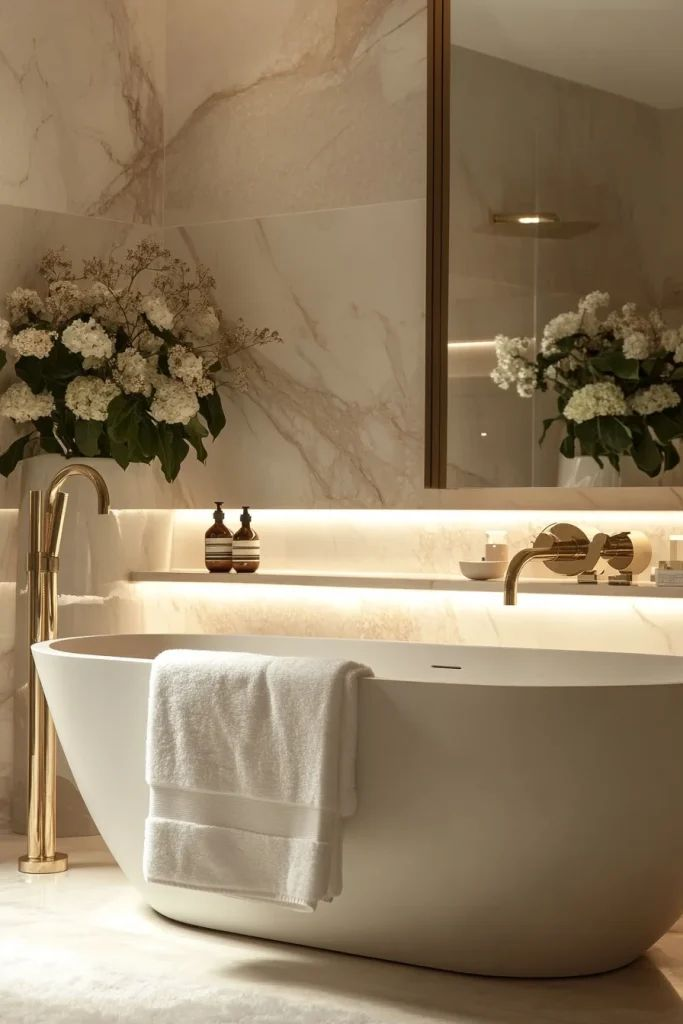
Few elements embody timeless bathroom luxury like a standalone tub. It functions as both a statement piece and a relaxation haven, turning ordinary bath routines into spa-like escapes. With curved contours and symmetrical lines, freestanding bathtubs echo historical elegance while fitting seamlessly into modern updates. Traditional cast iron models with enameled interiors remain popular for their heat retention and vintage charm. Placement is key—centering a tub beneath a window or chandelier maximizes visual impact. Matte finishes and sculpted silhouettes work beautifully in both large and compact spaces. Surrounding elements like mosaic flooring, paneled wainscoting, or vintage-style fixtures accentuate the tub’s prominence. Freestanding tubs also open up the visual footprint of the room, making it appear more spacious. Whether it’s a slipper design for ergonomic comfort or a double-ended version for symmetry, these bathtubs offer functional artistry. Their versatility ensures they anchor classic bathroom aesthetics with quiet confidence and long-lasting appeal.
Vintage Fixtures
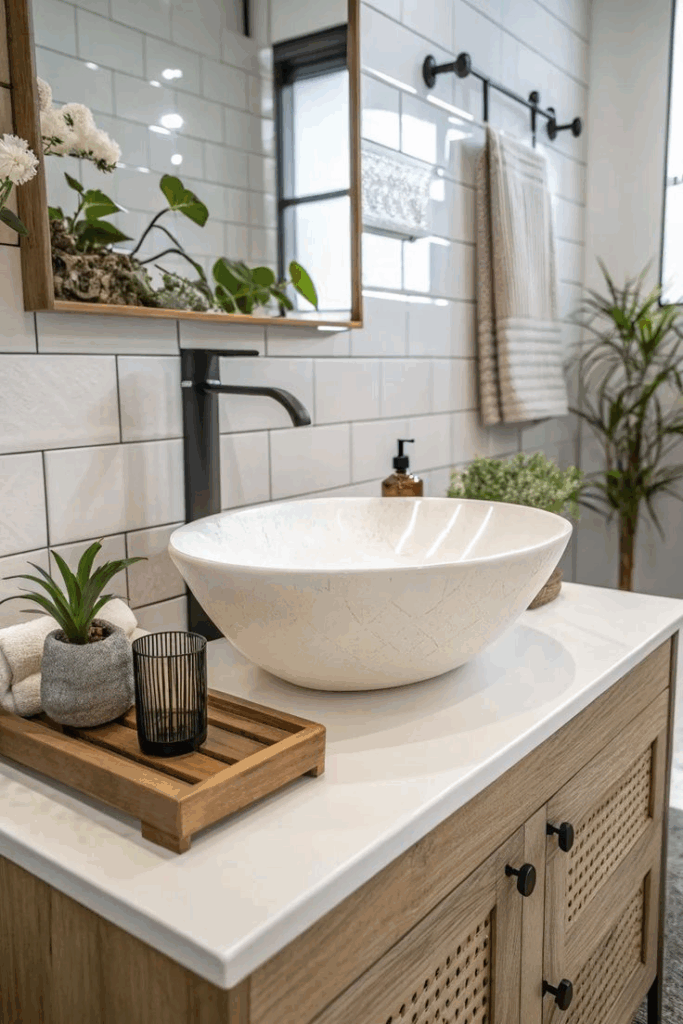
Time-honored hardware adds narrative and character, elevating even the simplest bathroom layouts. Vintage-style fixtures—cross-handle faucets, porcelain lever controls, and gooseneck spouts—recall periods when craftsmanship defined luxury. Solid brass bodies, oil-rubbed bronze finishes, and polished chrome touches blend beautifully with pedestal sinks or clawfoot tubs. Wall-mounted options offer space efficiency while maintaining that old-world feel. Authenticity lies in the details—ribbed escutcheons, hex bolts, and ceramic hot/cold inserts lend texture and depth. These pieces often feature higher spouts and wider faucet spreads, reinforcing the generous scale typical of classic interiors. For lighting, exposed-bulb sconces and frosted glass globes offer vintage charm without overpowering the space. When matched with period-style hardware such as towel bars and robe hooks, the entire room speaks a cohesive design language. For those renovating heritage homes or curating timeless aesthetics, vintage fixtures form the foundation of a bathroom that feels intentional, storied, and beautifully preserved.
Neutral Color Palettes
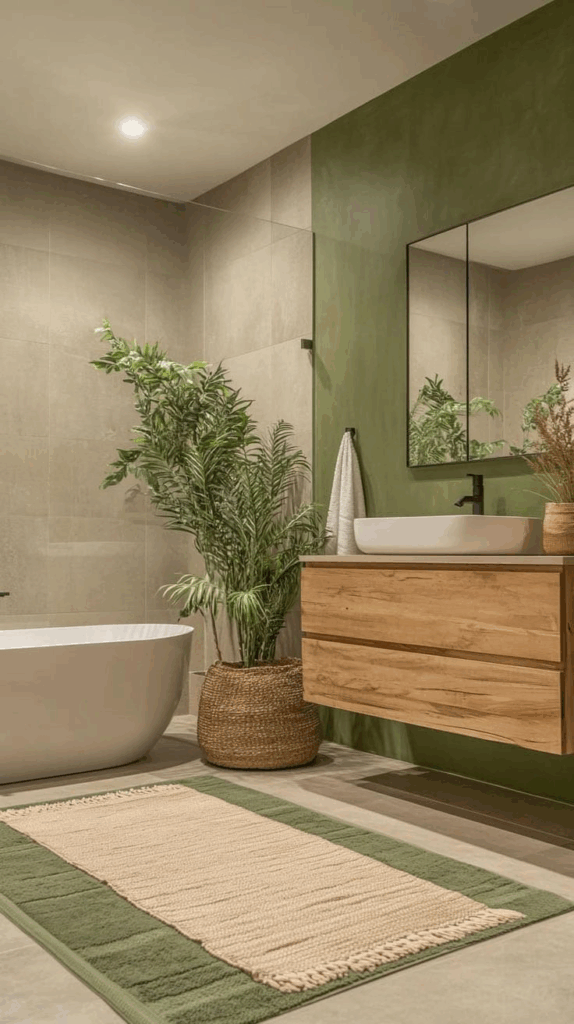
A balanced approach to color creates serenity and visual longevity in traditional bathrooms. Soft whites, gentle creams, muted taupes, and warm grays set a clean and timeless foundation. These tones serve as a neutral backdrop for architectural detailing and classic materials to shine through. Off-white subway tiles, ivory beadboard, or beige marble surfaces keep the environment grounded while offering design flexibility. Accent tones in matte black or antique brass lend contrast without disrupting the core palette. Neutral schemes also allow decorative features—like ornate mirrors or patterned flooring—to take center stage without competing for attention. Layering tones within the same color family (such as pairing warm gray walls with taupe textiles) adds depth while keeping the aesthetic cohesive. Natural light bounces beautifully across lighter shades, enhancing brightness and perceived space. Whether designing a compact powder room or a grand ensuite, a neutral palette supports classic styling while staying adaptable to evolving décor trends.
Subway Tile Walls
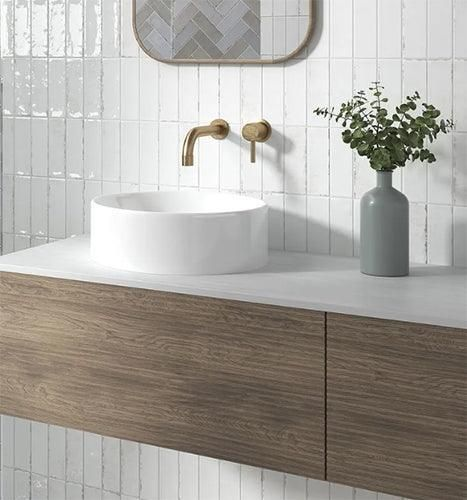
Brick-patterned tiling continues to define refined, traditional bath spaces with its simple geometry and enduring appeal. Subway tiles, typically measuring 3×6 inches, bring visual rhythm and a clean backdrop ideal for layering vintage or classic accents. The crisp grout lines create subtle texture, while the familiar horizontal layout evokes early 20th-century architecture. Glossy white finishes remain the standard, reflecting light and amplifying space—especially in smaller bathrooms. However, off-white, sage, or soft gray options offer a more tailored, nuanced look. Pairing with dark grout adds contrast and accentuates the tile’s structure, making even utilitarian spaces feel deliberate and styled. For timeless authenticity, consider a stacked or running bond layout with beveled edges. These tiles also serve as an excellent companion to pedestal sinks, brass hardware, and wainscoting. In showers or around tubs, full-height subway tile installations deliver moisture resistance while maintaining a cohesive aesthetic that complements classic design principles.
Pedestal Sinks
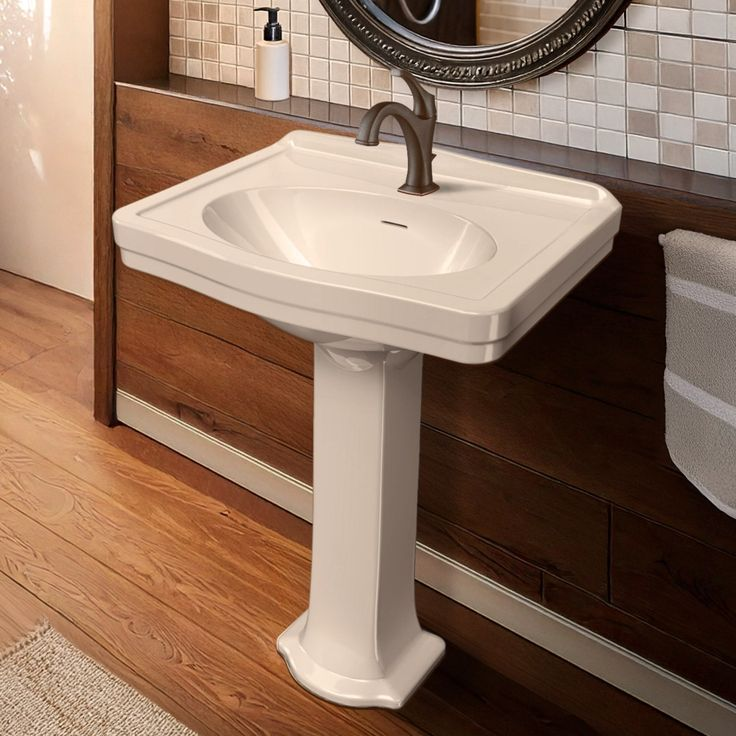
Graceful silhouettes and minimal footprint define the traditional pedestal sink. Often featured in classic bathroom remodels and historical homes, these sinks emphasize vertical symmetry and fine detailing. The basin typically features sculpted edges, flared corners, and porcelain finishes that harmonize with vintage-style fixtures. Unlike bulky vanities, pedestal sinks visually open the floor plan, making them ideal for powder rooms and tight spaces. While they offer less storage, they create an uncluttered look that places emphasis on architectural detailing. Many designs echo Art Deco or Victorian inspirations, with fluted bases or curved aprons adding visual interest. Complementing elements such as wall-mounted faucets, framed mirrors, and hexagon floor tiles enhance the classic ambiance. Matching ceramic soap dishes, toothbrush holders, or towel rings round out the coordinated look. Pedestal sinks aren’t just about nostalgia—they offer enduring practicality and aesthetic refinement. Their elegant presence keeps the space timeless, polished, and rooted in design heritage.
Clawfoot Tubs
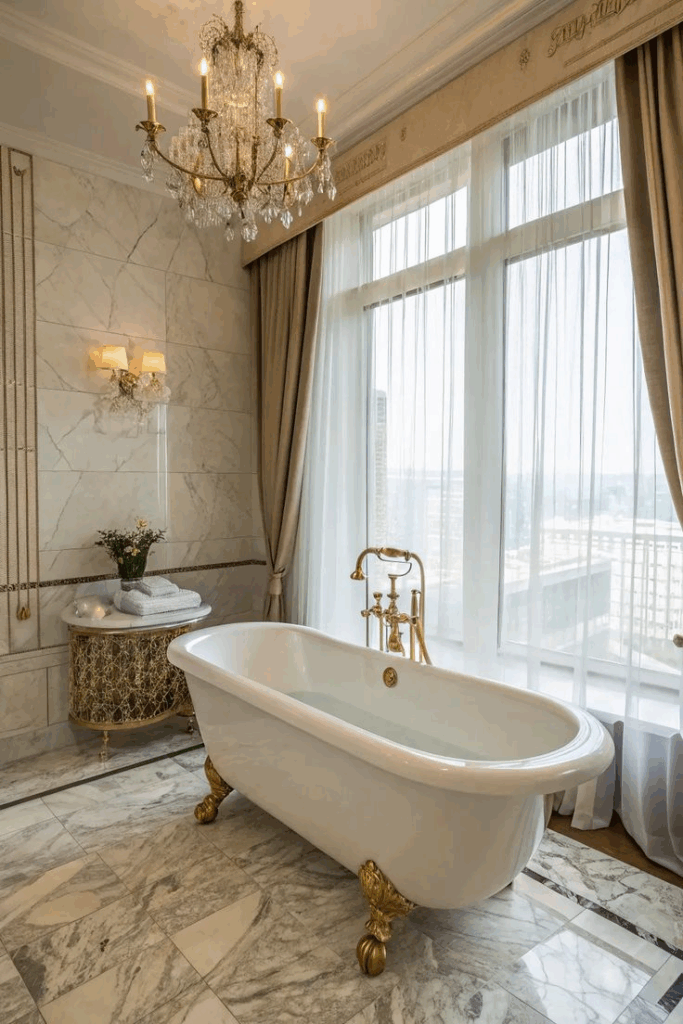
Ornamental yet highly functional, the clawfoot tub stands as an enduring icon of classic bathroom design. With origins tracing back to the 19th century, its silhouette remains virtually unchanged—curved lines, rolled edges, and decorative feet continue to captivate. These tubs are often crafted from cast iron and coated in durable enamel, offering excellent heat retention and a luxurious soak. Available in slipper, double-slipper, or flat rim styles, they cater to both comfort and aesthetic preferences. The claw-style feet come in polished chrome, brass, or painted finishes to complement different decor themes. While ideal as centerpieces in larger bathrooms, compact models also work well tucked beside windows or paneled walls. Designers often pair clawfoot tubs with vintage wall-mounted fixtures or freestanding tub fillers for historical accuracy. Whether kept classic in white or painted in muted pastels, these tubs evoke a sense of indulgence and period authenticity that never loses its charm.
Wainscoting Panels
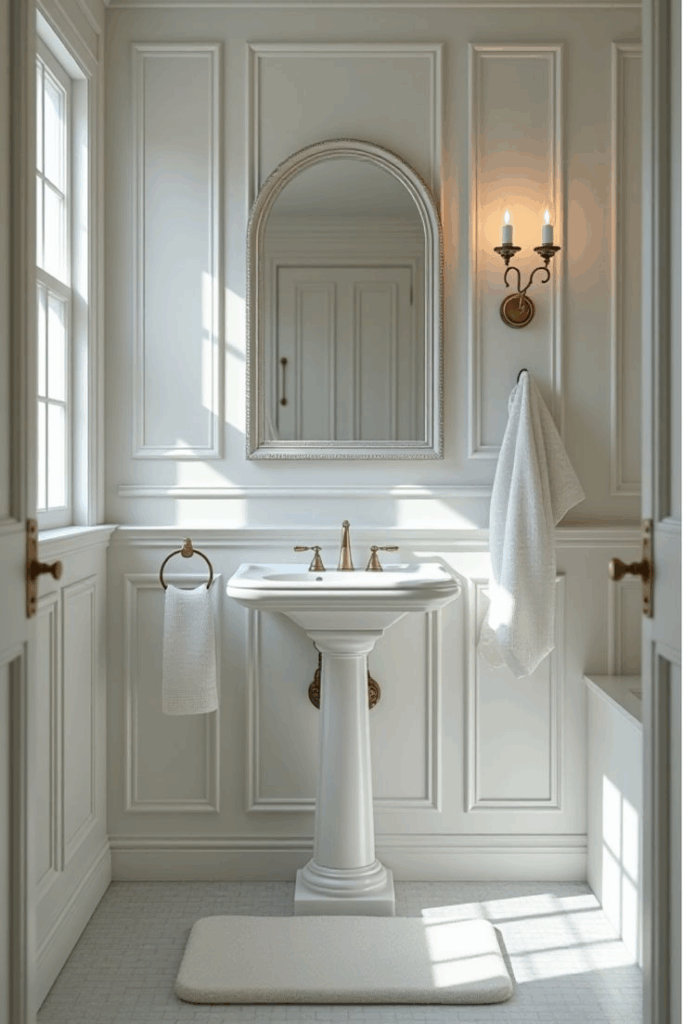
Timeless architectural details begin with millwork, and wainscoting plays a defining role in classic bath aesthetics. Installed at chair-rail height or higher, this paneling introduces structure and traditional styling. Often composed of beadboard, raised panels, or board-and-batten styles, wainscoting adds texture while protecting walls from moisture and scuffs—especially in busy households. White is the favored tone for its clean finish, but variations in cream, gray, or even soft blue can provide subtle contrast. Installing crown or base molding at the edges gives the paneling a complete, polished appearance. When extended halfway up the wall and paired with wallpaper or tile above, it offers a balanced two-tone effect. Its versatility supports everything from Colonial to farmhouse-inspired spaces. Designers often coordinate the wainscot color with trim and cabinetry for cohesion. Beyond utility, it introduces visual interest that elevates even the most modest spaces. This classic element enhances charm, symmetry, and timeless sophistication.
Brass Accents

Metallic finishes hold the power to define a room’s personality, and brass stands out as a warm, regal option for classic bath design. When applied through faucets, cabinet pulls, towel bars, or lighting, it brings vintage-inspired elegance and gleams against both light and dark palettes. Unlacquered brass is particularly prized for its natural patina, which ages gracefully and adds character over time. Satin or antique finishes evoke traditional European sensibilities, especially when paired with marble countertops or pedestal sinks. Even small brass elements—like mirror frames or switch plates—carry significant stylistic weight. In more neutral schemes, brass injects warmth without overpowering the room. Many designers layer it subtly with other finishes, allowing it to echo throughout the space for balance. It’s also an ideal choice when mixing classic with transitional elements, offering a sense of continuity. With durability and historical charm, brass accents serve as elegant anchors that reinforce enduring design integrity.
Checkerboard Flooring
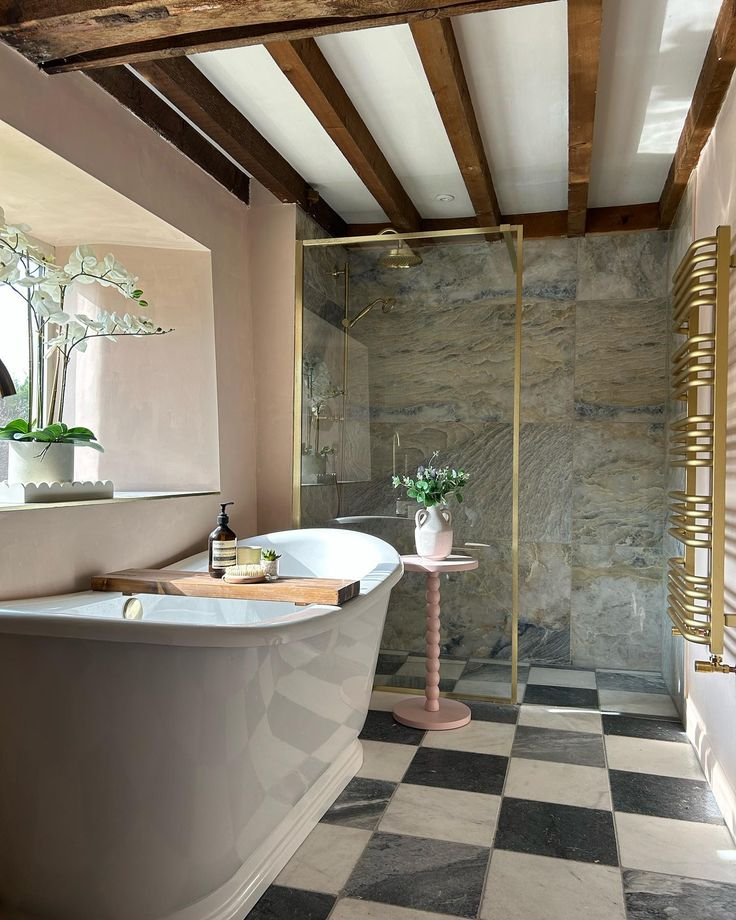
Patterned floors bring depth and movement, and the checkerboard layout continues to be a favorite in classic bathroom interiors. This timeless design—usually composed of alternating black and white tiles—lends instant visual drama while remaining rooted in tradition. Natural stone varieties like marble or limestone offer a more organic, muted interpretation, ideal for those preferring a softer look. Diagonal placement expands perceived floor space, while traditional grid layouts keep things formal and geometric. The durability of ceramic, porcelain, or stone ensures long-lasting appeal in moisture-prone areas. Often paired with white wainscoting, pedestal sinks, or clawfoot tubs, this floor design strikes a perfect balance between simplicity and sophistication. For subtle variation, designers sometimes opt for beige and ivory pairings, which soften the contrast while preserving the pattern’s integrity. Easy to clean and highly functional, checkerboard flooring provides a grounded foundation that complements both ornate and restrained elements. It continues to signal timeless taste and attention to detail.
Framed Mirrors
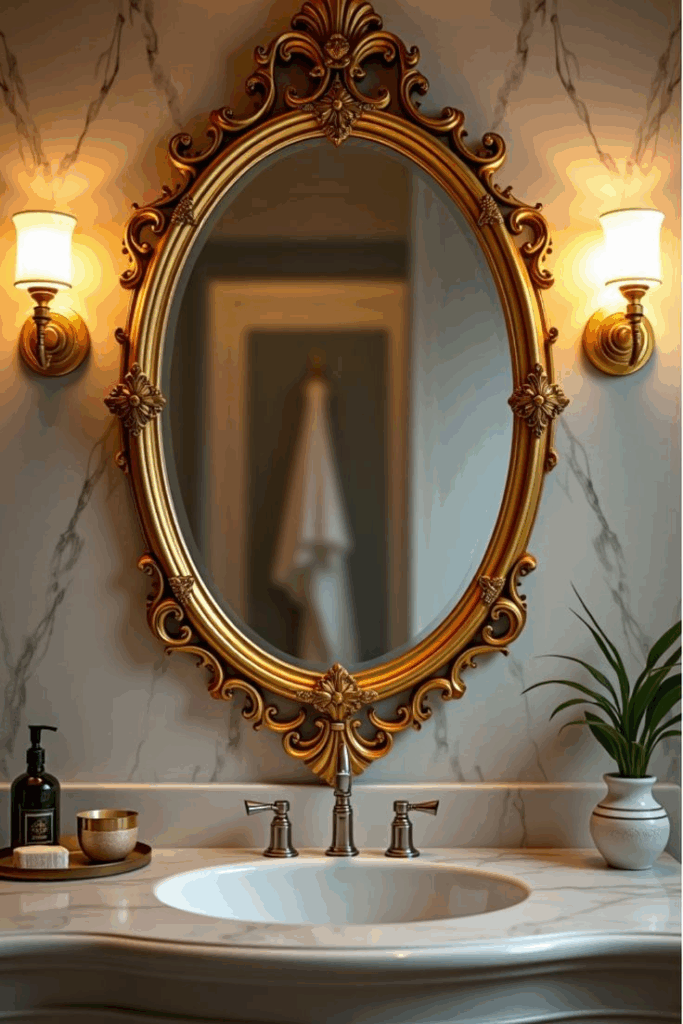
Functional elements double as décor when framed mirrors are thoughtfully chosen. Unlike frameless versions, which lean modern, a well-proportioned frame introduces formality and style to the bathroom. Materials like wood, brass, or wrought iron echo other finishes in the space, creating visual continuity. Beveled edges, carved detailing, and gold leaf finishes add layers of texture and sophistication. In smaller bathrooms, mirrors with lighter frames can make the room feel more open, while darker frames add contrast against neutral walls. Symmetry plays a key role—pairing identical mirrors above a double vanity reinforces traditional balance. In powder rooms, an arched or oval mirror above a pedestal sink creates a refined focal point. Placement above wainscoting or flanked by wall sconces enhances both function and form. This classic element doesn’t just reflect your appearance—it reflects thoughtful design rooted in tradition. Framed mirrors elevate everyday rituals with a touch of timeless artistry.
Wall Sconces
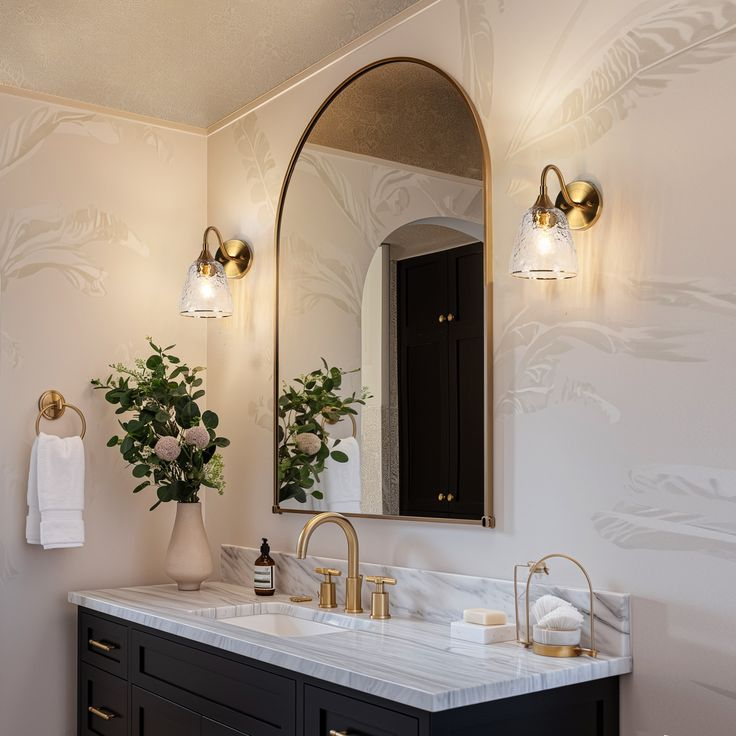
Ambient lighting plays a crucial role in shaping a room’s character, and wall sconces deliver both form and function in classic bathrooms. Positioned beside or above mirrors, they provide soft, focused illumination ideal for grooming tasks while maintaining visual warmth. Traditional designs often feature bell-shaped glass shades, brass or nickel finishes, and graceful, curved arms. The symmetry of dual sconces flanking a mirror creates an elegant frame, while single installations lend subtle sophistication to small powder rooms. Frosted or opal glass diffuses light beautifully, reducing harsh shadows. Beyond vanity zones, sconces along wainscoted walls or near freestanding tubs establish inviting glow zones that support relaxation. When chosen to match vintage fixtures or framed mirrors, they integrate seamlessly into the space. Smart placement ensures they work in harmony with overhead fixtures for layered lighting. Wall sconces are not just practical—they are one of the quiet signatures of classic bathroom design, radiating timeless ambiance.
Built-in Linen Cabinets
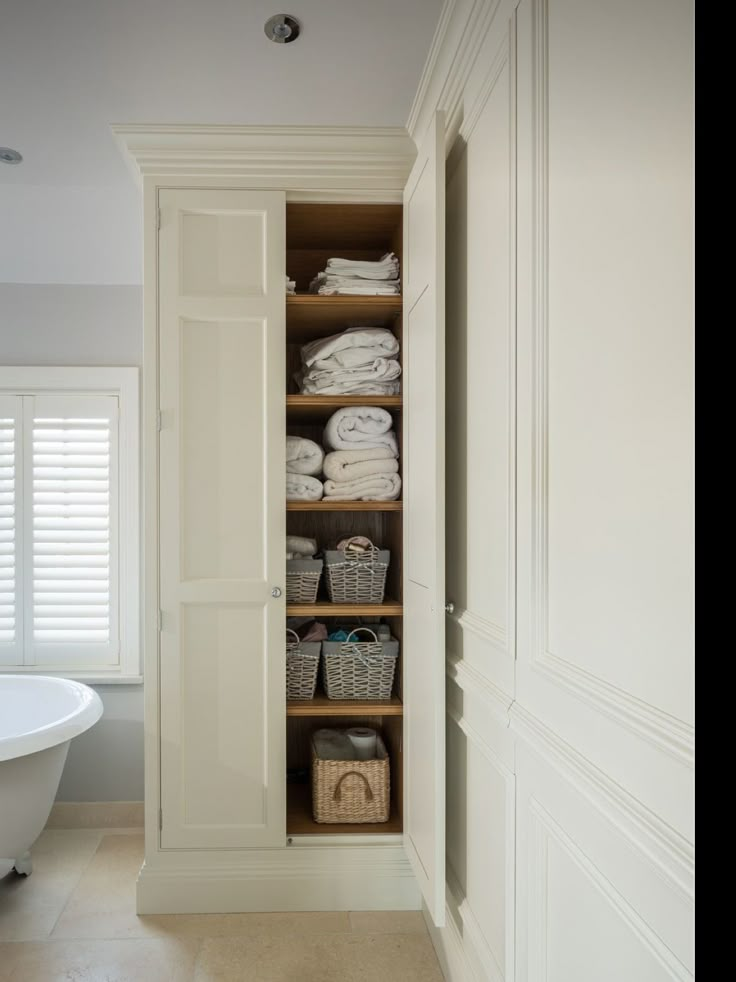
Efficient storage meets traditional styling in the form of built-in linen cabinetry. These custom installations tuck seamlessly into walls or corners, offering concealed space for towels, toiletries, and seasonal essentials. In classic bathrooms, paneled doors, antique knobs, and crown molding details mirror surrounding architectural features, creating cohesion. Painted in muted whites, grays, or creams, the cabinetry complements soft color palettes while standing as a functional design element. Adjustable shelving inside allows for versatile organization, from stacked towels to basket-lined compartments. When placed near the tub or vanity, linen cabinets ensure essentials are always within reach without cluttering surfaces. Recessed versions work well in smaller spaces, preserving floor area while enhancing storage capacity. Often paired with open shelving or glass-front upper doors, they blend display and concealment. For families or anyone seeking long-term practicality, built-in linen cabinets serve as timeless solutions that harmonize with traditional interiors and meet everyday needs with understated elegance.
Traditional Wallpaper
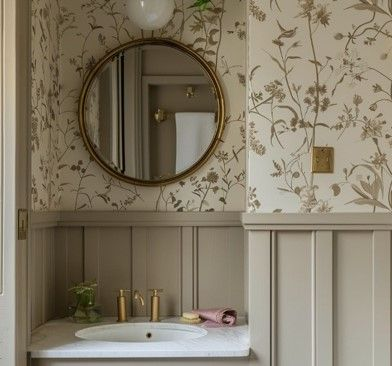
Visual richness takes center stage when classic motifs are applied through wallpaper. Floral damasks, delicate stripes, and toile-inspired patterns instantly anchor a bathroom in tradition. Used strategically—above wainscoting, on an accent wall, or throughout smaller spaces—wallpaper introduces charm and a sense of personal style. Light, muted palettes in sage, beige, or powder blue maintain airiness, while deeper tones bring moody refinement. Paper quality matters: vinyl-coated or moisture-resistant options hold up well in steamy environments. Designers often coordinate wallpaper with other elements like paneling, drapery, or vintage hardware for a polished effect. In powder rooms, bold prints offer high-impact design in a compact footprint. Framed mirrors, wall sconces, and pedestal sinks benefit from a decorative backdrop, allowing the space to feel layered yet cohesive. Wallpaper adds warmth and storytelling, whether evoking Victorian grandeur or cottage charm. It stands as a reliable way to express personality while preserving the room’s classic foundation.
Crown Molding Details
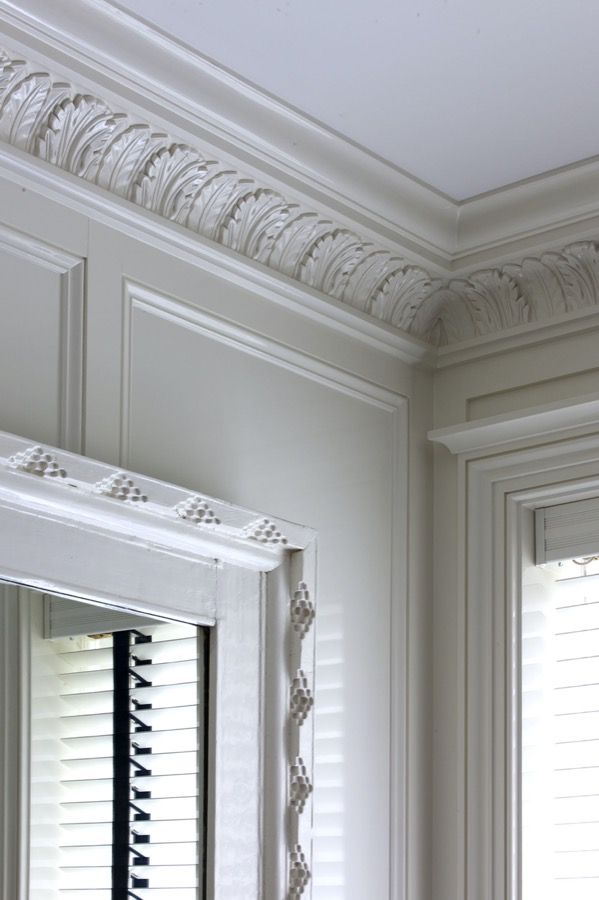
Architectural polish begins at the ceiling line, where crown molding subtly defines the room’s upper edges. In classic bathrooms, this decorative trim enhances visual structure while introducing a layer of refinement often found in traditional interiors. Whether applied as a simple cove molding or a multi-layered profile, it frames the space and connects walls to ceilings in a cohesive, finished manner. Painted in crisp white or matching trim color, molding accentuates ceiling height and aligns with surrounding paneling or cabinetry. It complements wainscoting, built-in shelves, and even tiled walls by softening transitions and lending proportion to vertical surfaces. Crown molding is especially effective in bathrooms with neutral palettes, where it becomes a standout design feature without being intrusive. When used in tandem with baseboards and window casings, the room feels deliberately composed. Precision installation is key—tight seams and clean corners are vital for a flawless effect. This enduring design element speaks to the craftsmanship of classic construction. It doesn’t compete for attention but rather completes the visual narrative of a well-appointed space, reinforcing the room’s sense of history, luxury, and timeless sophistication.
